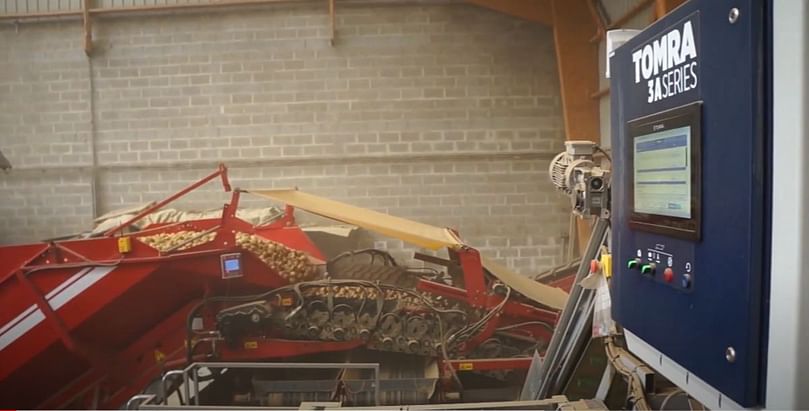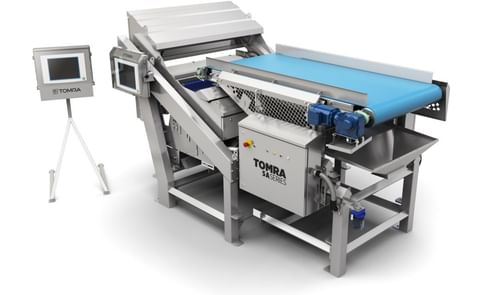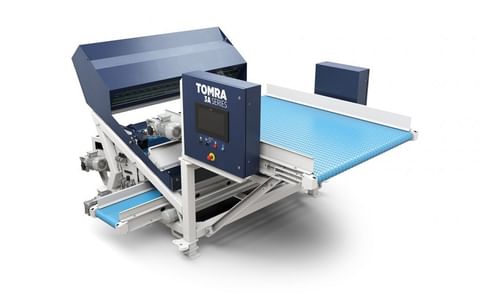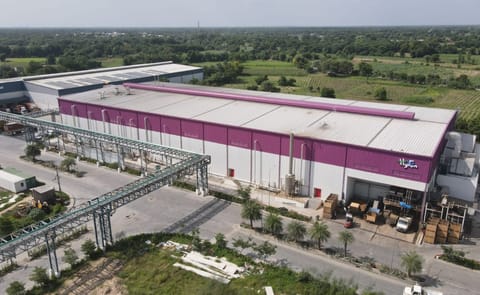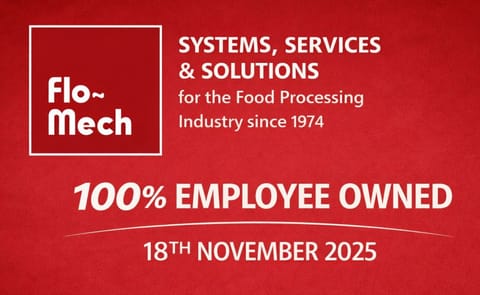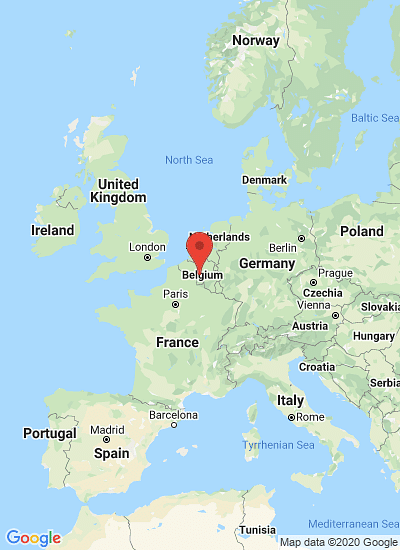Tomra 5a
How potato growers and processors can gain from the latest sorting technologies
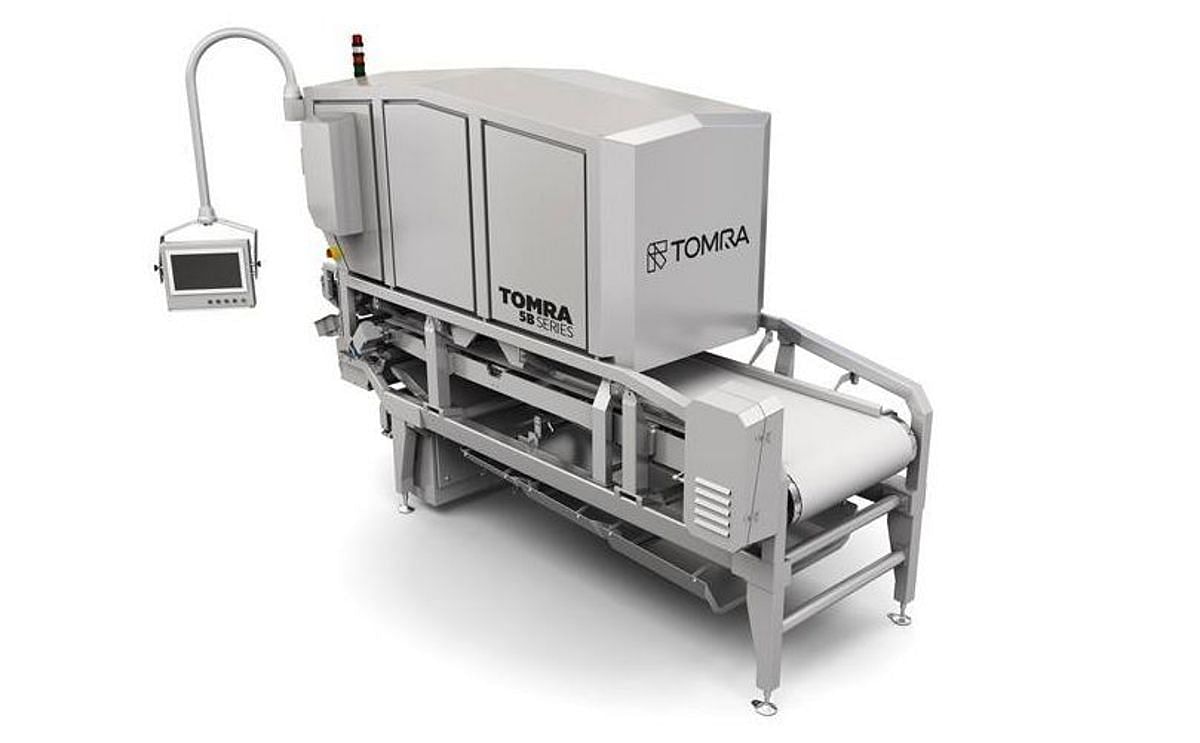
It’s not easy for potato growers and processors to always ensure food safety or meet customers’ specified standards. For one thing, all sorts of foreign materials get mixed up with potatoes when they’re harvested. For another, any batch is likely to contain some potatoes (and perhaps many) that are substandard.
And when these unwanted materials get into a processing line’s product stream, they can be almost impossible to detect - yet business reputations depend on eliminating them.
For these reasons, foreign materials and product defects are a constant worry, but modern technologies can deal with it. TOMRA Food’s industry-leading sorting technologies - optical sorting machines, application-specific modules, multi-lane sorters, and the TOMRA Insight data platform - are extraordinarily effective.
And sorting solutions are now available for a wide variety of potato products - everything from potatoes just taken out of the ground or storage to fresh pack, chips (crisps), French Fries, other frozen products (such as wedges, slices, and hash browns), and dehydrated flakes and granules.
What surprises many potato processors is how sorters can do so much more than sort. These highly reliable technologies also accurately grade to specification, minimize false rejects, increase recovery rates, handle high throughputs, manage peaks in demand, reduce the need for manual interventions on the line, solve labor-scarcity problems, reduce downtime, and reduce the line’s total cost of ownership.
All of this means that investing in sorters not only improves a business’ sustainability by cutting food waste, but also delivers a return on investment by enhancing yields and profits. Which sounds a bit like magic, so let’s take a look at the secrets behind it.
Sorting the harvested crop
Though potato products are sold in many forms, all begin their journey to market the same way: fresh from the field, unwashed. And immediately, the challenges start, because harvested potatoes are commonly mixed up with all sorts of unwanted debris.
Rocks, stones, clods of earth, sticks, stalks, vines, wood, plastic bottles, field mice, fragments of glass - you name it, in a pile of freshly harvested potatoes you might find it. Long before these foreign materials can threaten food safety, they bulk out the crop, increasing the need for precious storage space. They also worsen the risks in the storage of potato rot, breakdown, and product loss.
Growers can reduce these risks by running the crop through a pre-sorter before storage, then pre-sorting the potatoes again before they are washed and sent into processing. The machine best suited to this task is the TOMRA 3A, a sensor-based sorter designed for freshly harvested root crops.
This machine is typically used at the entrance to a potato storage shed to provide a final clean-up after the freshly harvested crop has passed through a mechanical grader and soil removal equipment.
The TOMRA 3A uses high-resolution cameras and near infra-red (NIR) to identify zero-value green potatoes, distinguishes between organic matter (the crop) and inorganic matter (foreign material), and is able to identify a good crop which might otherwise be mistaken for a soil clod because it is heavily coated in soil.
And because growers may store potatoes at more than one location, this machine is designed to be moved easily from shed to shed.
The TOMRA 3A is so effective that it removes 95% of rocks, floating stones, dirt clods, and corn cob, plus 85% of other typical foreign materials.
Related
Sometimes a small amount of foreign materials may remain mixed up with the potatoes when they go into storage, but the task of removing these - which may be smaller and harder to detect - is handled by a more sophisticated sorter later in the production process.
The TOMRA 3A significantly reduces the sorting work required at these later stages, reducing stoppages due to machine damage and optimizing downstream equipment.
A sorter designed for potato processors
After the potatoes have been harvested, pre-sorted, stored, typically pre-sorted again, then washed, sorters on the processing line have to detect and eject the harder-to-see foreign materials and product defects.
This is important not only to ensure food safety and product quality but also to prevent disruptions on the line.
If foreign materials get too far down the line making French Fries or kettle chips, for example, they can break slicing knives and bring the entire operation to a halt.
To counteract these threats, the TOMRA 5A optical sorter was specifically designed for potato processors. Intended to handle washed and peeled potatoes, typically used for French fries, chips, specialty potato products, this in-air sorting machine is equipped with top and bottom banks of optical inspection to view each individual object in flight.
Using a combination of pulsed LED, camera, and near-infrared (NIR), it performs targeted spectroscopy with 1mm precision. Machine parameters can be set to precisely alter the accept/reject levels for subtle defects, discolorations, and blemishes in the potatoes and product size and shape.
The TOMRA 5A is noted for its superior removal of foreign materials, with a 98% the removal rate and highly efficient detection of rotten potato, potato defect, and remaining peel.
Not only does this help the processor with food safety, but also it gives them the tool to maximise the use of all usable potatoes and miminise waste.
And at the same time as accomplishing all this, the TOMRA 5A is capable of running the highest capacities in the industry (sorting French fry potatoes, for example, at 54 tons per hour).
Also at the packhouse, some bigger businesses like to go beyond reducing the number of manual sorters they employ and completely eliminate the need for human intervention. This can be achieved by complementing TOMRA Food’s sorting machines with a Multi-Lane Sorter (MLS).
Renowned for gentle product handling while maintaining throughput, TOMRA’s industry-leading MLS system accurately sorts and grades potatoes (and other vegetables and fruit) according to weight, size, shape, color, surface blemishes, and internal quality.
An even more sophisticated option
Another machine suitable for potato processors is the TOMRA 5B. As products move along this machine’s belt, foreign material and produce imperfections are detected by on-belt 360-degree-surround cameras, a laser, and off-belt cameras. Combining these technologies takes optical sorting to an even higher level.
It is suitable for specialty potato products, French Fries (which must also be accurately sorted to size), and chips/crisps. Because this machine’s NIR can detect density differences, it is able to see and remove chips/crisps which have stuck together in clusters or been spoiled by wet centers after frying.
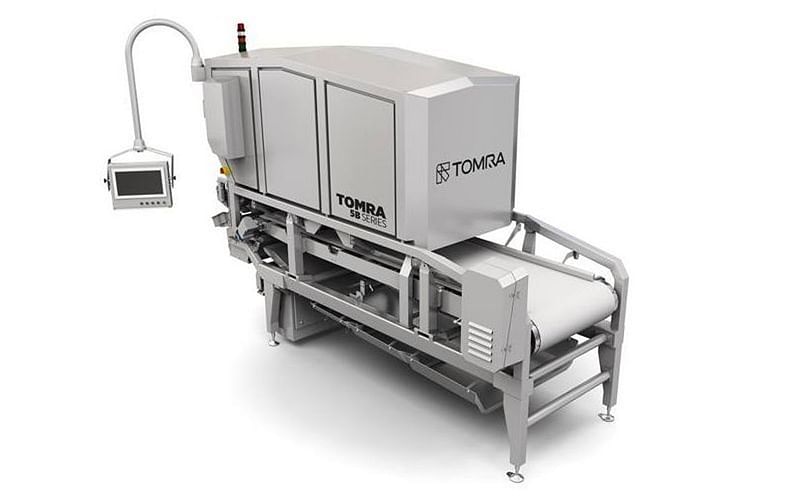
The TOMRA 5B has a user-friendly design, excellent performance, and state-of-the-art hygiene features that comply with the latest standards and regulations.
The off-belt laser detects up to 99% of foreign material and can see whether chips contain excessive oil or water content.
The TOMRA 5B was further enhanced in early 2021 by a software update that added new features. One of these, Health Check, reduces the risk of line disruptions caused by dirt sticking on the machine’s window between the camera/laser and the product stream.
Health Check automatically checks the machine’s cleanliness before sorting and informs the operator which surfaces need cleaning. And because it works remotely, the operator or line manager doesn’t even have to go to the line to make the Health Check.
Another feature, Smart Ejection, uses new de-clustering algorithms that improve efficiency in French Fries production.
Smart Ejection improves good-in-bad performance by anything from 25% to 100%; improves accept-stream quality by making even more accurate decisions on defect types and clusters; and reduces false detection, especially of shorts in clusters, to minimize product waste and increase yield - another good example ROI.
Clever controls and a data platform
TOMRA Insight’s Health Check and Smart Ejection features are good examples of how today’s sorting machines are so effective not only because of their all-seeing 'eyes' - their cameras, lasers, and NIR spectroscopy - but also because of developments in software and controls.
These have brought easy-to-program features that only a few years ago would have been the stuff of dreams. Many control features are now available to enhance sorting efficiencies in potato processing.
Sort-to-Length, for example, ensures that French Fries meet a pre-determined grade. Reverse Sorting recuperates good product from recovery streams.
SmartSort helps operators easily define color specifications and detection settings. Dynamic Cloud gives a real-time view of all the materials the machine assesses as defects so that detection settings can be fine-tuned.
And Sort-to-Spec makes it easy to sort batches into different qualities, for example, AAA-grade and B-grade fries.
Another recent development in sorting technologies, and one of profound significance, is data acquisition. By gathering data from sorting machines in near real-time and storing this securely in the cloud, the TOMRA Insight subscription-based service turns sorting machines into connected devices with information that can unlock machine performance improvements.
Acting on this data - which can be accessed from anywhere and across plants via web-based desktop and mobile devices - pays off in many ways. Downtime is reduced by monitoring machine health near real-time, supporting the management of predictive and condition-based maintenance, and preventing unscheduled machine shutdowns.
Throughput is maximized by evaluating throughput variations in order to optimize sorting equipment. Operating costs are reduced by identifying gaps in production and analyzing potential root causes.
Also, sorting to target quality is enhanced by having accurate material-composition data that enables decisions to be based on more detailed information.
Sorters are now profitable management tools
TOMRA Insight is transforming sorting from an operational process into a strategic management tool. What’s more, this tool is constantly becoming more powerful because the platform’s functionality and features are reviewed and updated every three weeks in response to customers’ needs and priorities.
This is just one of the ways in which TOMRA Food works closely with growers and processors and collaborates with their other line suppliers - making it easier to meet daily operational challenges while enhancing profitability.

